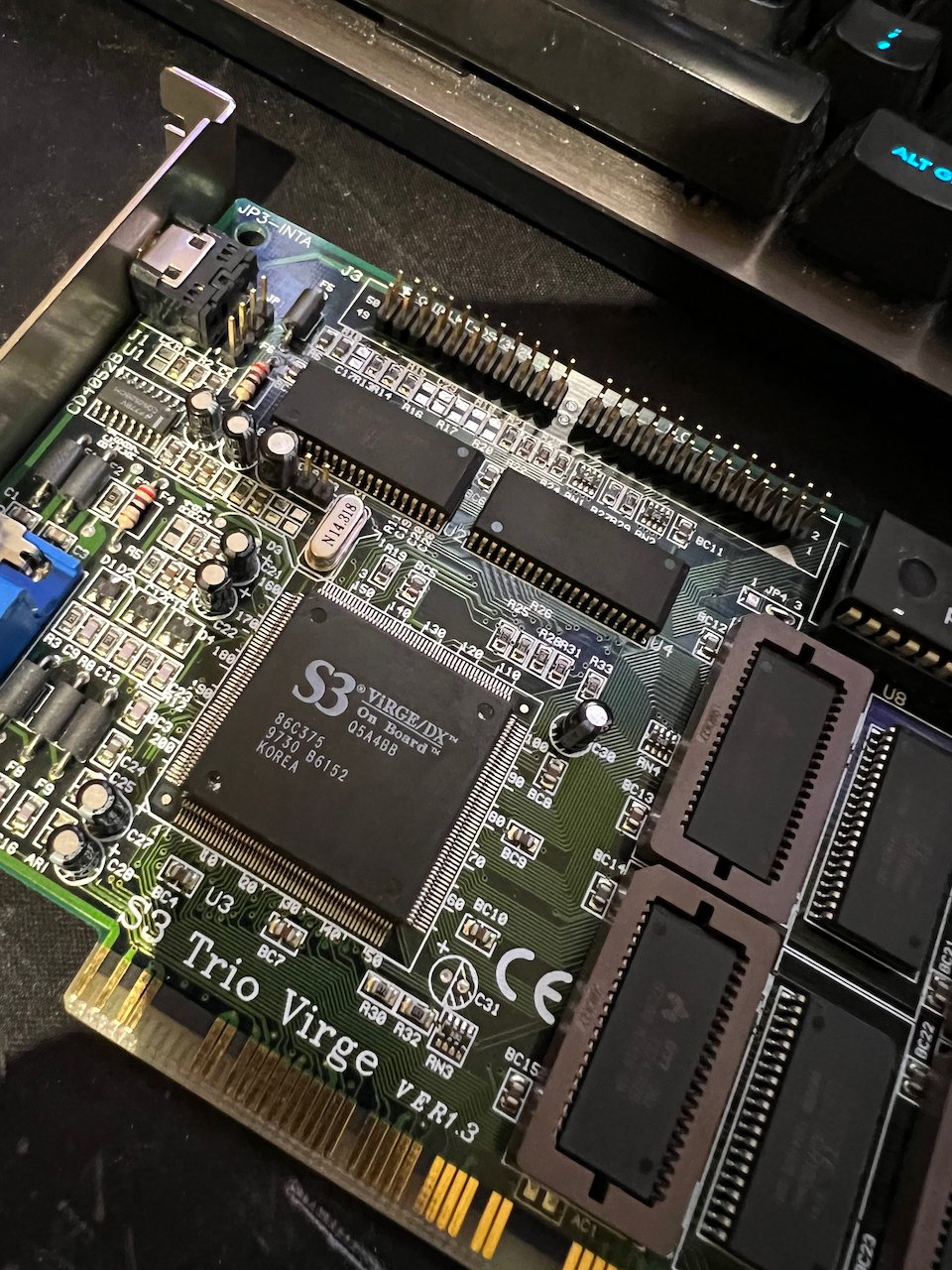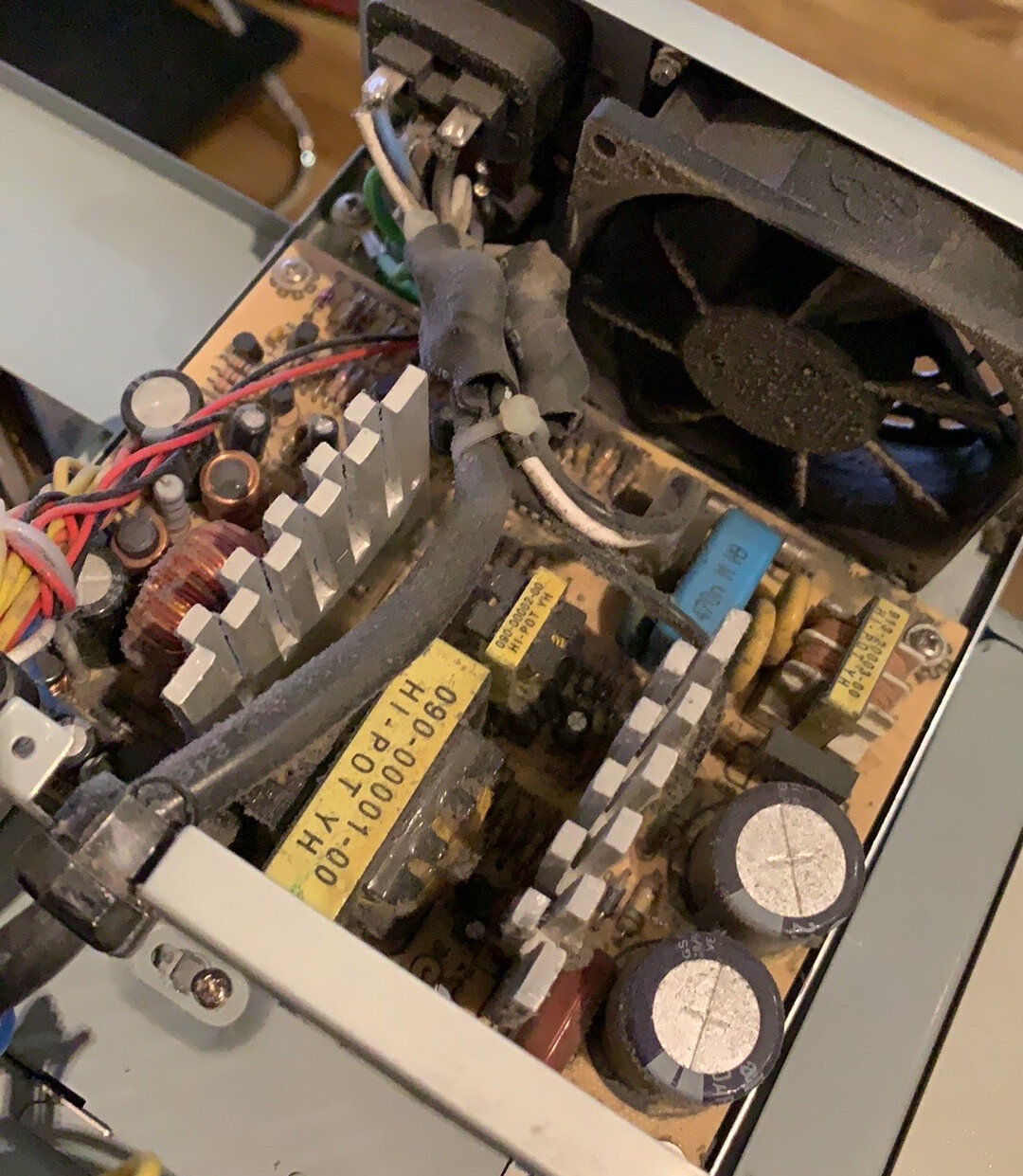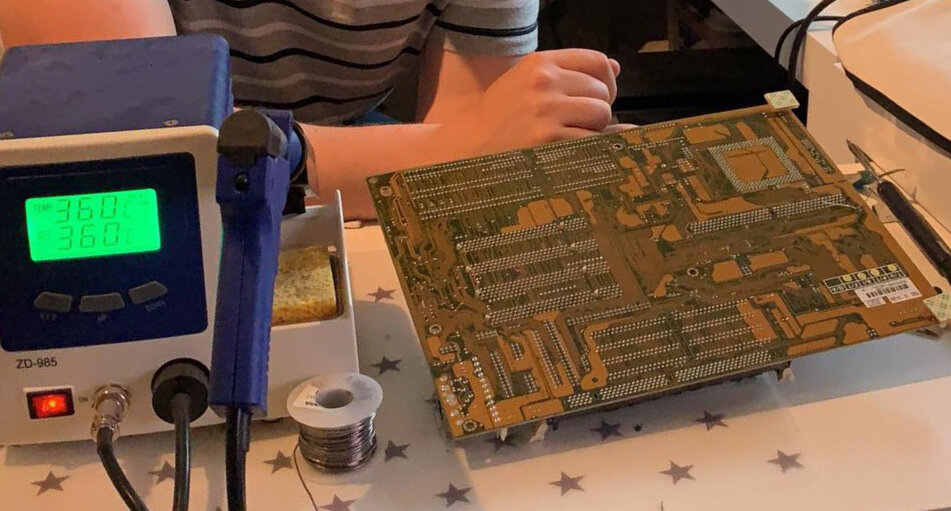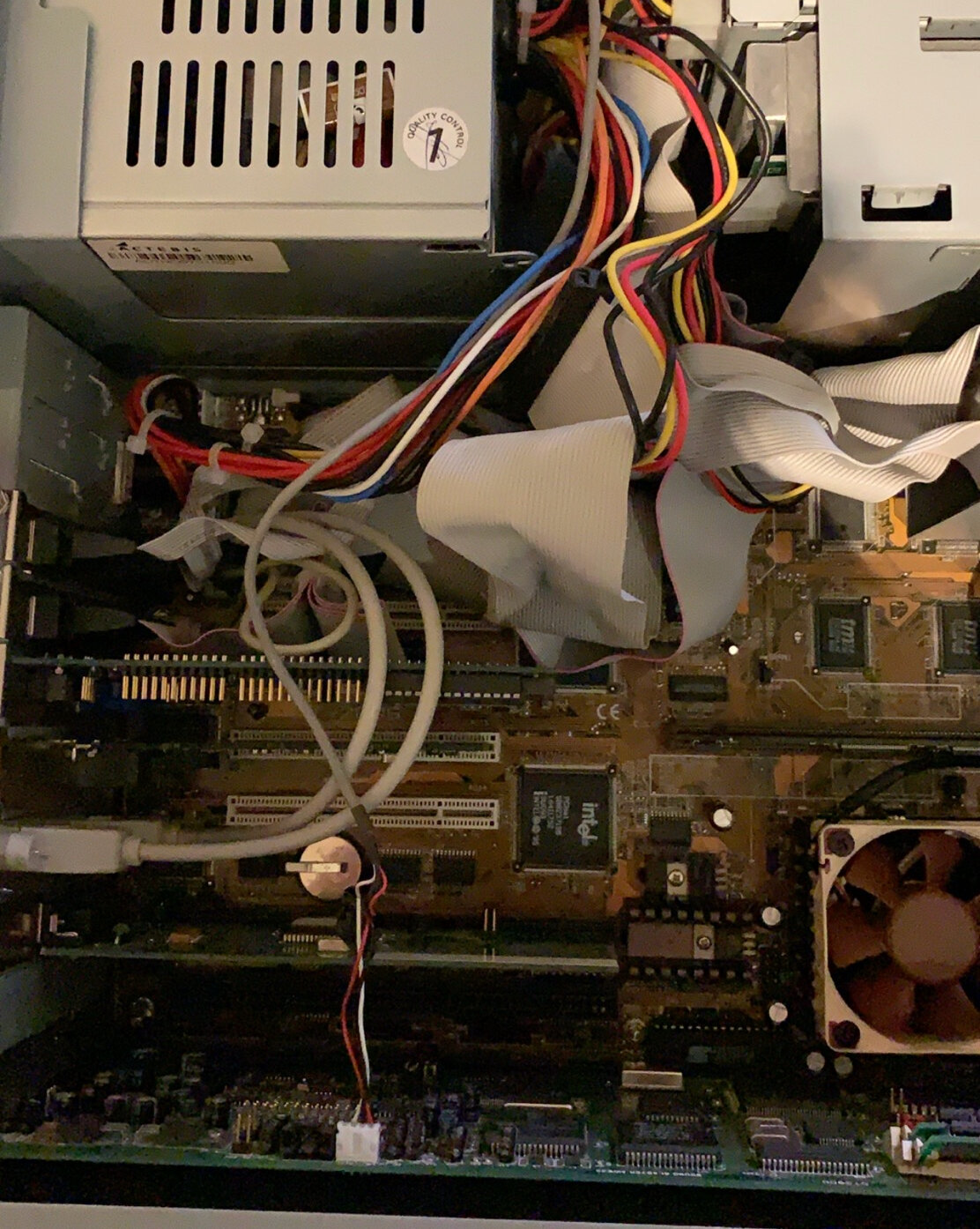My DOS box now has a first generation 3dfx, so I thought it was time to make sure the primary graphics adapter was keeping up with it. I’d also had some compability issues, not solved by S3VBEFix. So a new BIOS and overclocking was overdue. Go for the 2.01.07 and not the newest BIOS to skip on brightness issues.
The new firmware sourced on Vogons and flashed to a Winbond W27E257 with my Xgecu T56.
As the the 83 Mhz version runs hotter than the stock 50 Mhz I removed the sticker with some label off, and attached a heatsink with some thermal adhesive.







